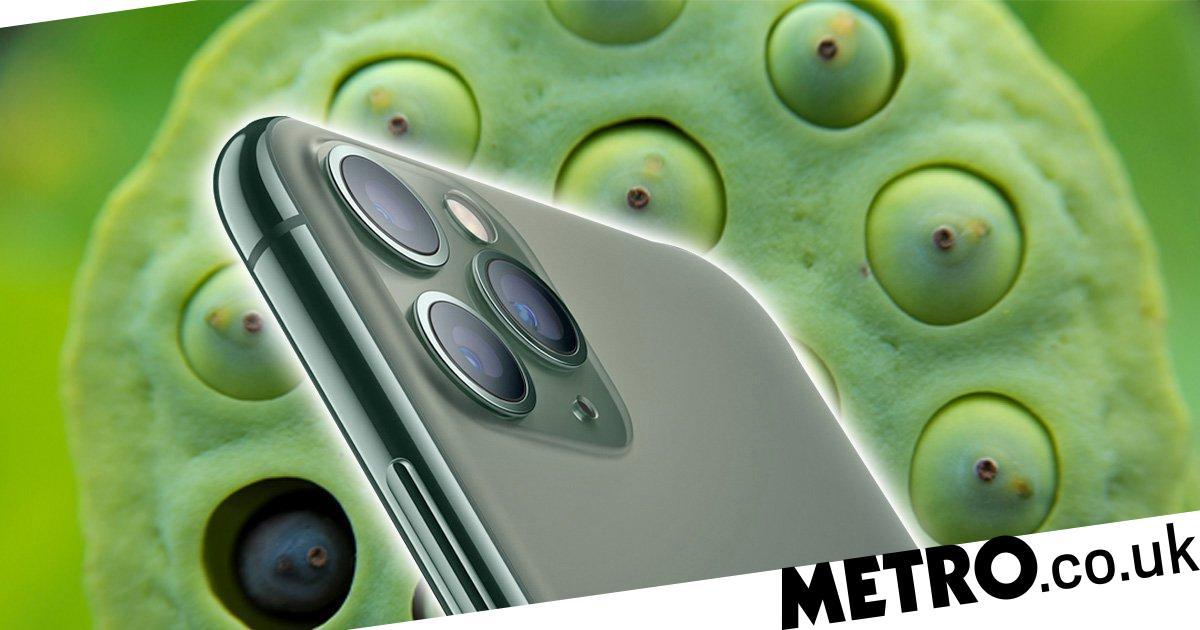The new iPhone 11 Pro is having a profoundly unsettling effect on people who suffer from a fear of small holes.
Apple’s latest flagship gadget has a powerful triple camera system which is triggering trypophobia attacks in people who see pictures of it.
Encountering a certain arrangement of small holes such as the ones on the surface of a lotus plant can be very discomforting for trypophobics.
Dozens of people have taken to Twitter to share their stories of woe after encountering images of the iPhone 11 Pro, which was revealed today at an event in California.
The YouTuber Eva Gutowski tweeted: ‘Three cameras on the new iPhone actually triggers my trypophobia.
‘I can’t have people walking around me with those cameras every day.’
Influencer and food blogger Mona Nomura also shared a picture showing several iPhone 11 Pro handsets and wrote: ‘WTF are these?
‘They look like spider faces and activate my trypophobia. All aboard the iPhone 11 NOPE train… choo-chooooooooo.’
Dr Geoff Cole, a senior lecturer at the University of Essex’s Centre for Brain Research, published the first academic paper on trypophobia.
He believes that patterns of holes which triggers trypophobia have a ‘mathematical structure’ similar to the arrangement of colours or markings on a predator or poisonous animals and plants.
Earlier this year, he told Metro: ‘I get letters and emails all the time which say things like: “I couldn’t go to work for three days when I saw an image.”
‘Others say they find it hard to concentrate after viewing one.
‘For many people, they see something bad and it keeps playing on their mind. That’s a common one.’
The psychologist said trypophobia is a ‘matter of degree’, with some people facing a serious response when they encounter a trigger image and others only suffering minor effects.
Last year psychologists released a study which suggested people suffering from trypophobia are hit by a physiological response more like disgust than fear when they encounter a group of small holes.
‘Some people are so intensely bothered by the sight of these objects that they can’t stand to be around them,’ Stella Lourenco, a psychologist at Emory University, said in a statement.
‘The phenomenon, which likely has an evolutionary basis, may be more common than we realize.’
Source: Read Full Article

